The neck can be a little enigmatic until you get a hold of it. What’s most important to know is mostly what it’s range of motions is, and how two primary muscles move in tangent with the neck and throat itself. So let’s take a little dive.

https://www.spine-health.com/conditions/neck-pain/stiff-neck-causes-symptoms-and-treatment
The neck, as you probably know, is comprised out of the smallest vertebrae on our spine. Their limited size makes this part of our spinal cord highly mobile, save for a full 180 turn, and a complete backbend. The reason we can’t turn our head like owls is a combination of the cartilage sticking our vertebrae together, and the muscles in our neck simply not being long enough to pass our chin over our shoulder blades. We can’t snap our neck back to rest between our shoulder blades because of the little taps at the back of the vertebrae ( the spinous process ) interlock with each other when we bend back. One of the functions for these taps is for the body’s muscles to attach to and flex from.
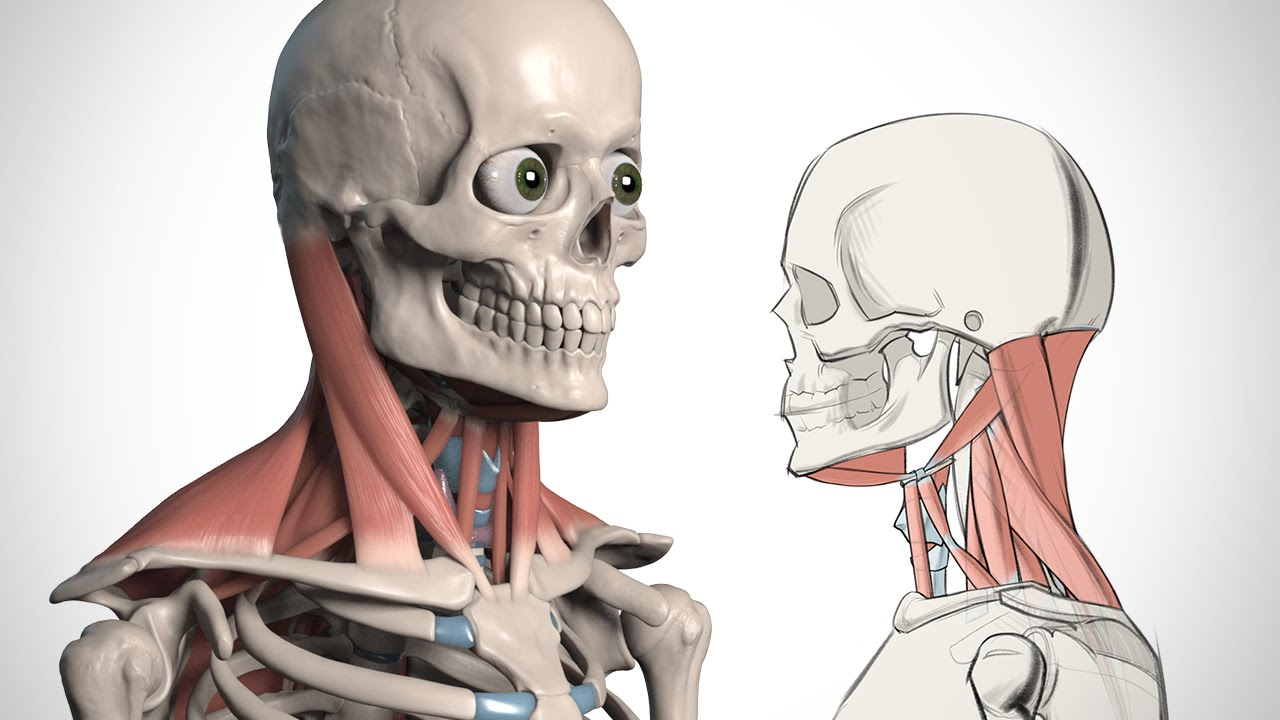
https://www.youtube.com/watch?v=TvN71bOfC1Q
As we can see, the throat and neck are comprised of relatively few larger muscles, and a good few smaller ones. Although, for the most part, these smaller muscles are not something we can see when the skin is laced on top since they sit underneath the larger muscles. So for the purpose of brevity, we’ll focus primarily on the Sternal Head and the Clavicular head. Which is the two long muscles that stretch from the base of the skull’s braincase, and respectively to the collarbone, and right between the collarbones?
As well as the Trapezius, which connects the outer clavicle to the back of the head ( this muscle also reaches all the way down between the shoulder blades on the back )
The Trapezius

https://legionathletics.com/trap-exercises/
The Trapezius is a large muscle that smoothens down from the back of the base of your skull, and all the way down to the shoulder. In people with an average build, the Trapezius slopes very smoothy from A to B almost like a soft piece of fabric stretched out over the muscles. If you work with bulkier characters however, those with above-average muscle mass, you’ll find that the Trapeziuos grows into more of an outward curve when gaining mass.

https://www.swimming.org/justswim/swim-gym-routine-exercise-shoulders-and-lats/
The Sternal and Clavical Head
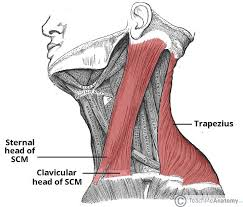
https://twsmassage.wordpress.com/2017/01/16/sternocleidomastoid/
The combination of the Sternal and Clavical head is typically what you see people depict in semi-realistic depictions of the human neck. This kind of V shape is very indicative of the throat’s overall structure, and can give precise information about how the head is turned exactly.
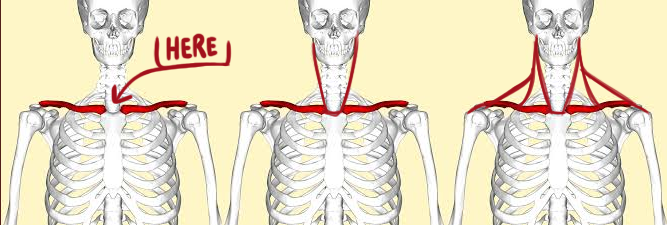
https://en.wikipedia.org/wiki/Clavicle
What’s so important to note about the two muscles is that, like any other muscles, they stay connected to their origin points. In this case, those two origin points are rather simple to find on your character as long as you know where the clavicles sit. They always connect to the same position on the skull though, right behind the ear.
The Sternal head, as indicated by the name ( Sternum) connects to the breastbone, right between the clavicles. While the Clavical head ( also as indicated by the name ) connects somewhere midway on the clavicle. Depending on the build of your character, the Clavical head can be more or less visible. If your character’s a muscular type, then it’s likely that there will be contours hinting at its presence under the skin. But if they’re of normal weight it’s unlikely they’ll be visible. If your character’s particularly skinny, they might also show a bit of definition due to the low amount of fat deposited around the muscle.
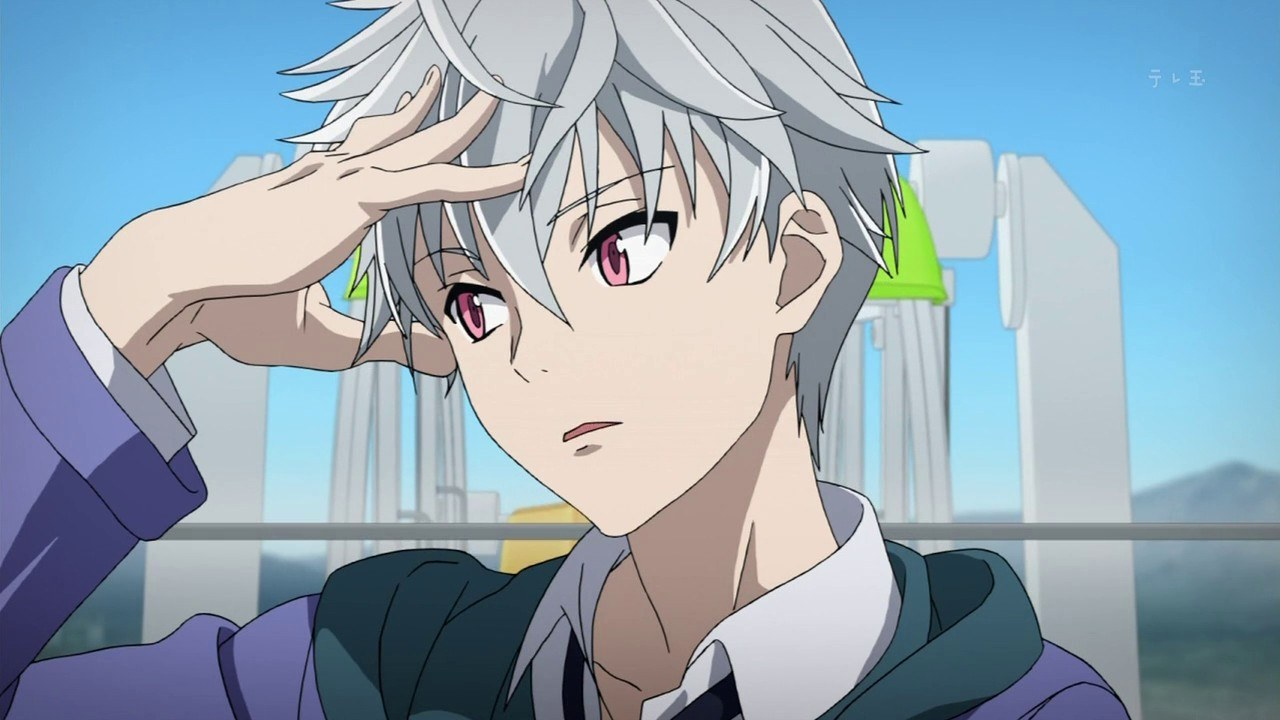
https://www.koreaboo.com/lists/nct-actually-japanese-anime-characters-come-life/
So no matter how we turn or bend our necks, these two muscles will always connect to the same points but warp accordingly to the posture of our head. And usually, if you can just place the Sternal heads, you can work off of them to find the point for your Clavical head.
Another important note, the back of the neck always connects to the back of the skull, not in the middle of it. We have a lot of artists come into our inbox who misplace the neck to the center of the skull. You can help yourself a great deal by remembering that the Trapezius connects to the back of the skull ( safe a slight curve-out from the skull’s base to the top ).

Additionally, if you want to get a little more “realistic” you can look for the triangular bit of tissue that connects from the centre of the throat, and out to the two corners of the jaw. This bit can be very useful to remember when you want to draw heads facing a slightly upwards angle, or in direct profile. It is nearly just as flexible as the other muscles we’ve gone over and will warp accordingly to the posture of the head contra the torso. But will always stay attached to the three points. This section bulks up when we tug the chin closer to our neck and stretches thin when we eject our chin from our neck.

I hope this gave some sort of clarity. There’s, of course, a little more to it if you want to get really technical with the muscle layout. But I recommend you looking into medical books or illustrations for more in-depth walkthroughs of the actual build. In terms of the neck’s/throat’s range of movement, I recommend you testing it ours on yourself. There’s a great variety to how flexible people are, so drawing one general conclusion from myself ( a person with a spinal disability and limited range of motion ) is not going to help you at all. But observe yourself and others and draw your own observations, and understand the structure of the bones and muscles to find out the extent of a character’s dynamic range.
from The Redline Station https://ift.tt/2qXg8ti
via IFTTT
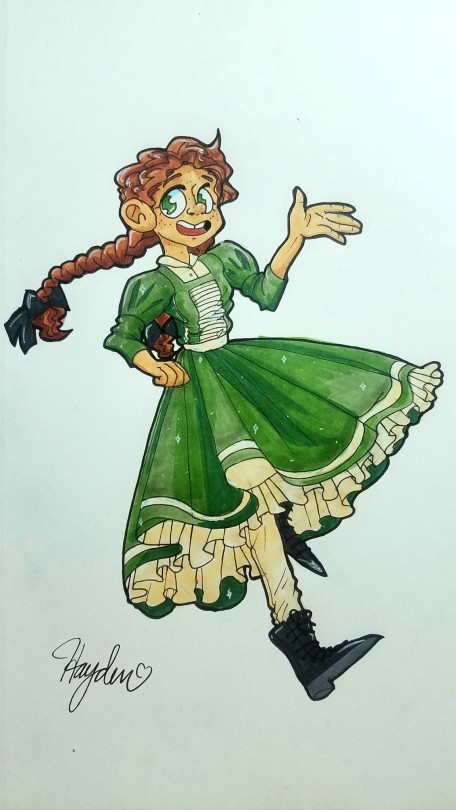
No comments:
Post a Comment